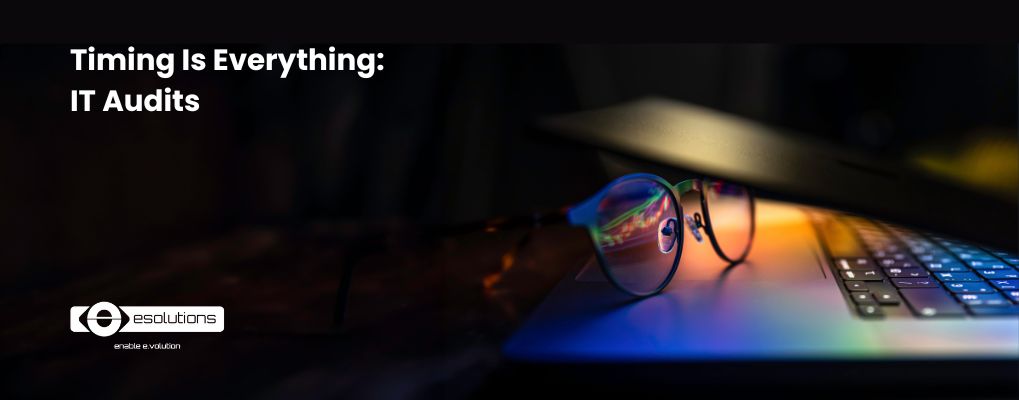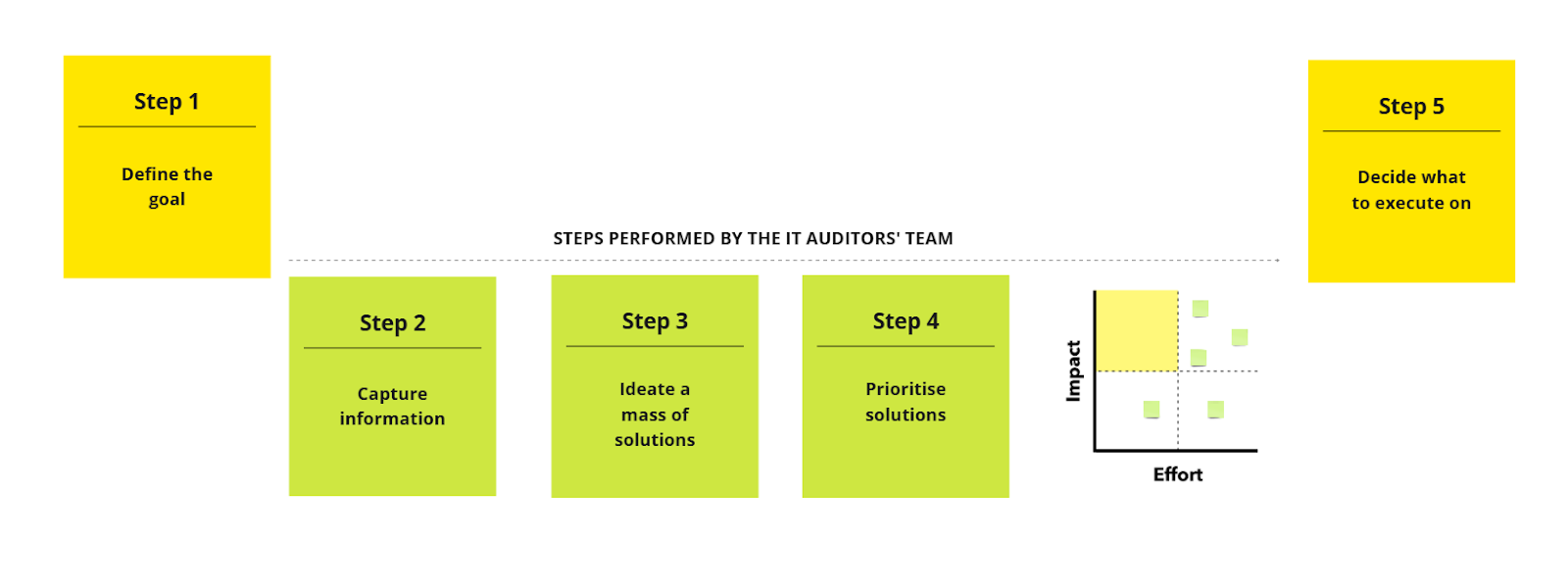
IT audits are key in ensuring compliance, security, and operational efficiency in your organization. However, conducting audits regularly can sometimes be resource-intensive. That is why, as CxOs or IT managers, it's best to identify strategic moments when an audit will provide the greatest value for your business.
This article examines the optimal times for an IT audit, such as during organizational restructuring or budget planning, to help businesses minimize risks, optimize IT spending, and maintain compliance.
An IT audit is a structured evaluation of an organization's IT systems, processes, and controls to assess security, efficiency, and compliance.
We view IT audits as essential first steps before making any major business decisions. The primary goal of an IT audit is to ensure that the IT infrastructure supports the organization's objectives, protects sensitive data, and operates efficiently.
We’ve noticed that timing is key to making the most out of your IT audit. There are several moments to take into account, such as:
Before setting your business objectives for the next year or quarter, conduct an IT audit to assess IT capabilities and identify areas for improvement, ensure your technology supports growth and innovation, and address weaknesses before executing new strategies.
Mergers, acquisitions, IT leadership changes, or system upgrades all introduce risks or integration issues. Conducting an audit ensures that the IT systems remain aligned and secure during transitions, that new management has a clear understanding of the IT infrastructure, and that no security gaps arise from integrating new technologies or teams.
Needless to say, if your organization has experienced a data breach or any other security incident, an immediate IT audit can help assess the damage, identify vulnerabilities, and help you to implement corrective actions or preventive measures.
Regarding informed IT investment decisions, an audit can help you identify cost-saving opportunities by eliminating inefficiencies, justify IT spending with data-driven insights, and prioritize projects based on risk and business impact.
If your organization is subject to regulatory requirements (such as GDPR, HIPAA, PCI-DSS), it’s wise to conduct an IT audit before compliance deadlines to ensure that all necessary controls are in place.
Establishing a regular schedule for IT audits (i.e. annually, bi-annually) can help maintain ongoing compliance and security. This can also help identify issues before they become significant problems. However, as mentioned earlier, this may not be feasible all the time.
If your business has seasonal fluctuations (for instance, in ecommerce), try to use the slow business periods for audits. This minimizes disruptions while allowing IT teams to thoroughly evaluate systems without daily operational pressures, and prepare for peak seasons with stronger, more secure infrastructure.
Last but not least, many companies choose to conduct IT audits at the end of the fiscal year. This timing allows for a comprehensive review of the IT systems and processes before financial statements are finalized. Conducting an end-of-year IT audit can help reduce costs, optimize resources, and align IT spending with business priorities.
Let's look at some cases when IT audits could have prevented major data breaches. Just two years ago, Forever 21, a famous online retail company experienced a significant data breach that exposed the personal information of over 500,000 individuals. Despite having data backups, the online retailer lacked a comprehensive disaster recovery plan to address such incidents effectively, which led to a decline in customer confidence.
Online retail is not the only industry at risk. Even technology companies, which rely heavily on data integrity, have suffered major losses due to insufficient disaster recovery plans. In 2017, Gitlab, the well-known platform for source code hosting and collaboration, suffered a significant outage and data loss when a system administrator accidentally deleted a production database. While GitLab had backups, they did not have a fully tested disaster recovery strategy. When several backup systems failed simultaneously due to misconfigurations GitLab lost approximately six hours of user data, affecting thousands of developers. Having backups alone is not enough—a disaster recovery plan must include tested, redundant recovery procedures to ensure data can be restored quickly and accurately.
These cases highlight the importance of conducting IT audits to identify vulnerabilities before they lead to failures. As technology evolves, so do the risks associated with outdated systems, poor integration, and insufficient disaster recovery strategies.
However, a well-executed IT audit not only helps organizations mitigate potential threats but also ensures that their IT infrastructure is resilient, scalable, aligned with business objectives, and can support future growth in your organization.
For instance, we've recently performed an audit for an online retail company and noticed that the integration between their legacy systems and new tools hindered their growth. In this case, our recommendation was to approach a more modern, microservices-based architecture, such as Kubernetes, as this would allow for easier scaling and less downtime.
Organizational change or business transformation can be achieved through a well-established goal and the commitment to reach it in the long run. In the IT realm, where everything is changing at a fast pace, reaching out to experts who do this every day can be worthwhile. Just as businesses undergo financial audits to ensure stability, IT audits provide clarity on the digital infrastructure, ensuring security, efficiency, and scalability. It is important to give yourself time to reflect and define the way forward for your business. And then find the easiest way to validate it.

The simplified process of defining the Transformation Path
The IT Audit is the first and most important step that can be taken in understanding the current situation and what paths are available to you and your company. When the audit provides a detailed report that can be turned into a roadmap, the process becomes significantly easier.
We believe that IT audits are most effective when conducted by hands-on experts with 10+ years of real-world experience. Our team will not only identify risks—they will help you develop a step-by-step IT strategy. Let's see which areas would be audited.
Our landscape audit team evaluates IT efficiency through the following areas:
A well-executed IT audit provides a clear roadmap for growth and security:
? A Clear Roadmap - A detailed strategy document outlining key findings, prioritized recommendations, and action plans.
? Final Report with Findings - A structured report summarizing insights on IT performance, security, and operational efficiency.
? Personalized Next Steps - You receive the details needed to make an informed decision on implementation priorities based on the audit results, with our guidance on execution strategies.
Thus, whether you have an established IT department or are just starting out, an external audit offers valuable insights in strategy, cost reduction, and future-proofing.
Choosing the right time and the right partner for an IT audit can make a significant difference in your organization’s efficiency and security. While well-established processes may only require annual audits, new or recently updated systems should be assessed more frequently to ensure they meet business objectives.
An IT audit should not be seen as a burden; it is a strategic tool that helps businesses stay ahead of security threats, regulatory requirements, and operational inefficiencies. Choose the right time to undergo an IT audit, and your business is set for success.
***
If you're unsure where to start, we're offering a free initial consultation to evaluate your IT auditing needs. Don't hesitate to contact us.
 Corina Staicu is the Chief Product Officer at eSolutions, where she leads the strategy for B2B digital products. In addition, she is a key member of the consulting experts team, conducting technical audits for companies in various industries. With over 17 years of experience in IT projects and service operations, Corina is an ITIL Expert and Project Management Professional, specializing in business analysis for IT systems, service operations, and project management.
Corina Staicu is the Chief Product Officer at eSolutions, where she leads the strategy for B2B digital products. In addition, she is a key member of the consulting experts team, conducting technical audits for companies in various industries. With over 17 years of experience in IT projects and service operations, Corina is an ITIL Expert and Project Management Professional, specializing in business analysis for IT systems, service operations, and project management.

An enthusiastic writing and communication specialist, Andreea Jakab is keen on technology and enjoys writing about cloud platforms, big data, infrastructure, gaming, and more. In her role as Social Media & Content Strategist at eSolutions.tech, she focuses on creating content and developing marketing strategies for the eSolutions’ blog and social media platforms.